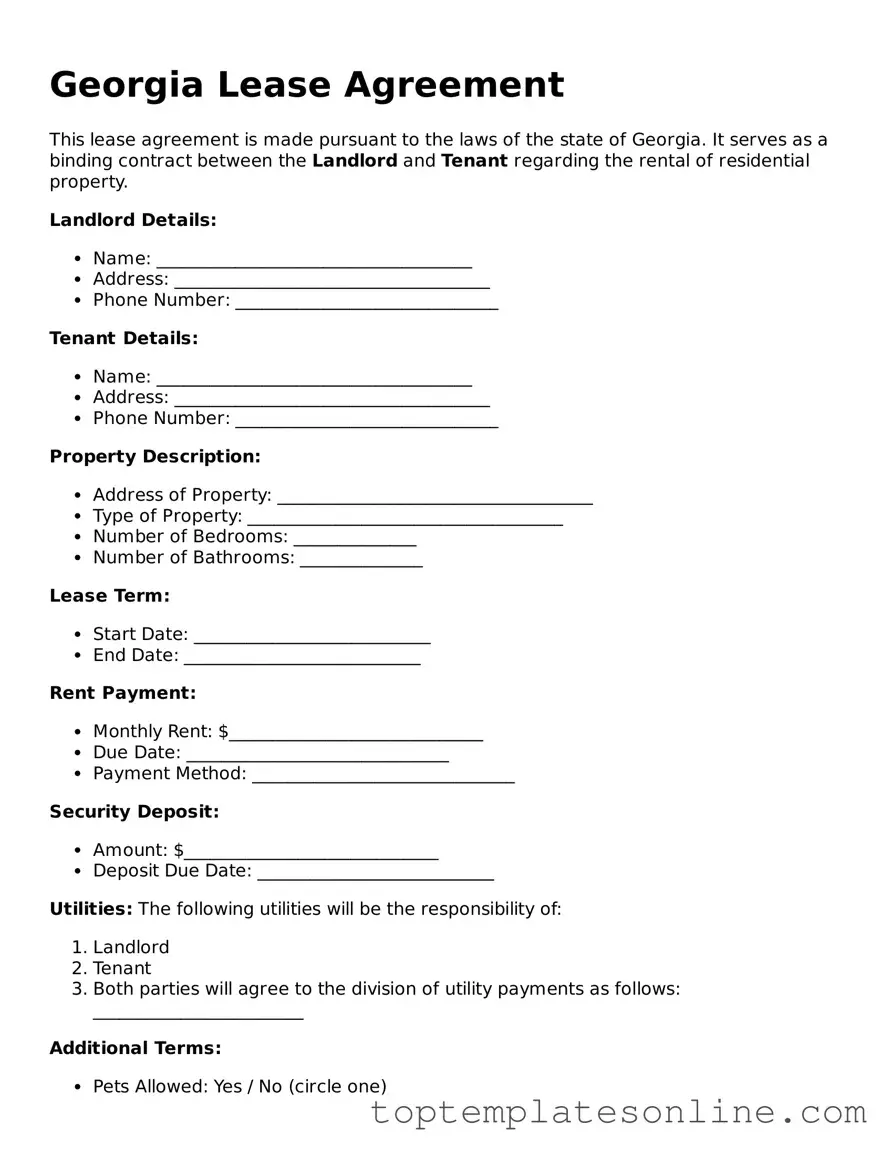Blank Lease Agreement Template for Georgia State
The Georgia Lease Agreement form is a legal document that outlines the terms and conditions between a landlord and tenant for renting residential or commercial property in Georgia. This form serves to protect the rights of both parties and ensure a clear understanding of their responsibilities. Understanding the key components of this agreement is essential for a smooth leasing experience.
Customize Lease Agreement Here
